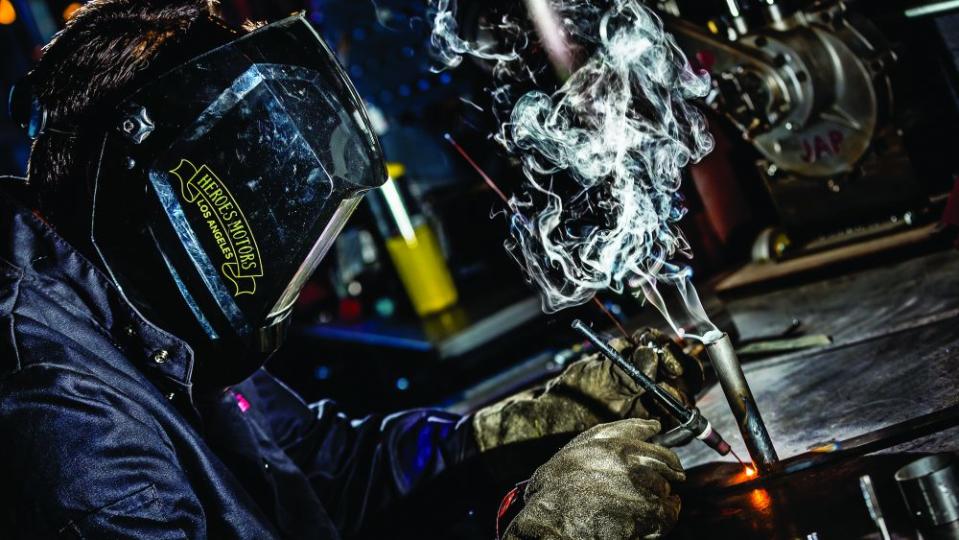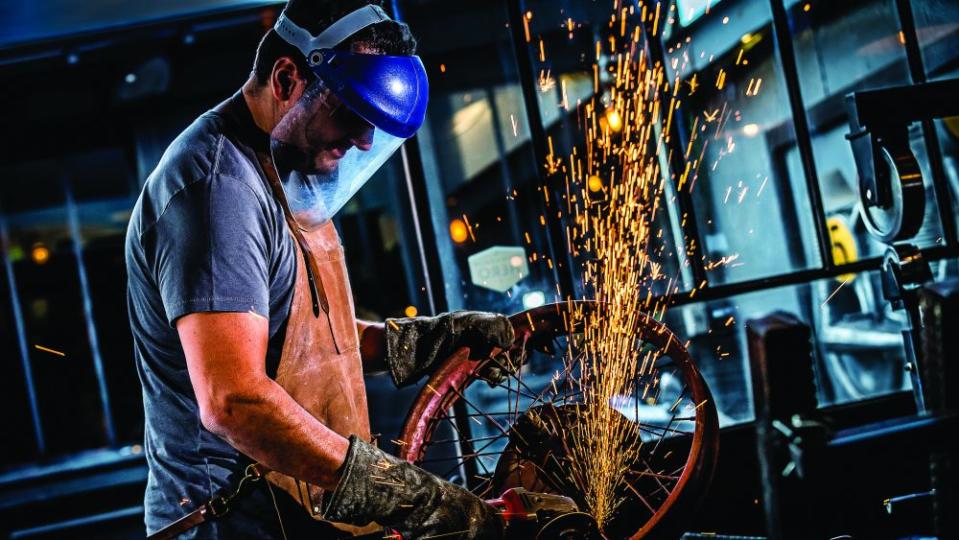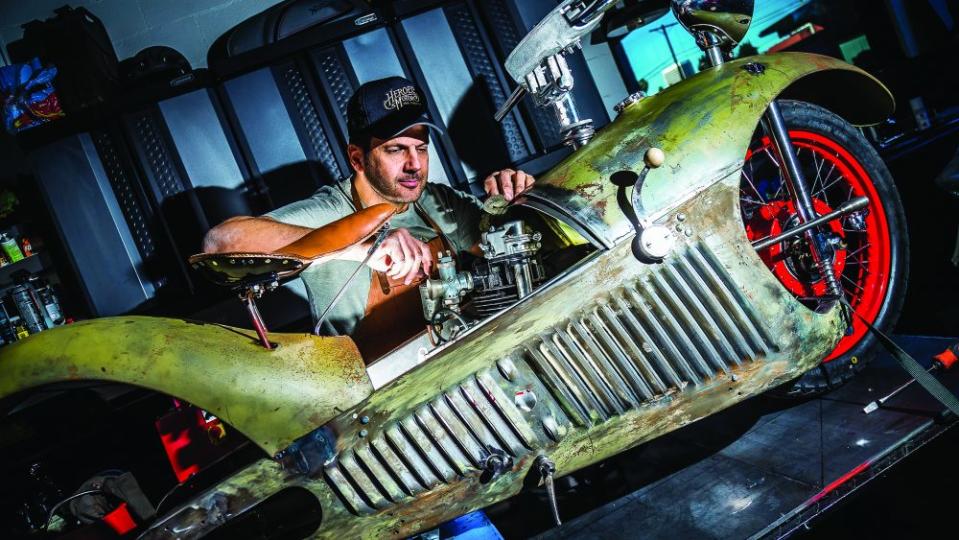How Serge Bueno Restored His Family’s 1929 Majestic into a $210,000 Masterpiece

A savior for long-departed motorcycle brands, Los Angeles–based Heroes Motors gives new life to bygone models, returning them to their original excellence and optimum performance. Frenchman Serge Bueno, founder and CEO of the restoration house, recently completed one such commission for the Haas Moto Museum & Sculpture Gallery in Dallas, but this time it was personal. The 1929 Majestic, originally made by fellow countryman George Roy, had belonged to Bueno’s late father. The Art Deco–styled streamliner is one of only 10 examples known to exist.
“This Majestic has been with my family for 30 years, and it was always my father’s goal to restore it, but he never did,” says Bueno, whose dad died 13 years ago, leaving him an assemblage of roughly 100 rare two-wheelers. “Bringing these classics back is a passion that’s in my blood.”
Related stories
Meet the Four California-Based Porsche Restorers Adding Their Own Legacy to the Marque
One of New York's Most Historic Spaces Is Becoming an Extravagant Cocktail Lounge
A 1973 Ford Bronco Comes Back from the Grave (in Style)
From a box of parts—stowed away in a Normandy farmhouse—to the $210,000 masterwork now shared with the public, Bueno spent five months rebuilding the bike—a journey tracked here.

1. The Brake-Down
Bueno welds the rear drum brake and its connecting bar. These integrated components will ensure the antique machine can be safely brought to a stop from a top speed of 55 mph.

2. Hot Wheels
“The motorcycle’s rims are original but the spokes are brand new,” says Bueno, seen here cutting out the rusted array of spokes before replacing them with ones made from more wear-resistant metal. “They need to be a little bit flexible,” he explains. “Chrome can crack, so stainless steel is the best.”

3. Fueling the Dream
Two months along, it’s time to fine-tune the carburetor and add gasoline before awakening the engine from its slumber. The body’s gill-like side louvers allow heat abatement once the Majestic’s restored heart starts beating again.
4. Block of Ages
The carburetor reunites with its 14 hp, 502 cc Chaise power plant. Located toward the front of the cycle, the 90-year-old four-stroke, single-cylinder motor has been with the Majestic since birth, but decades of dormancy took a toll. Says Bueno, “Rebuilding the engine was the most challenging part of the project.”
5. Sitting Pretty
A new leather saddle is set in place. Because of the classic cruiser’s rigid back end, the seat needs to provide rear suspension by way of two springs inside the fender, a simple yet effective solution for cushioning against the bumps on uneven terrain.
6. Dashing Display
Bueno buffs the ampere dial, clock, speedometer and gas-level indicator. The elevated dashboard is representative of the overall aesthetic, one described by the Majestic’s current steward, Bobby Haas, as “capturing the innovative beauty of the Art Deco era as well as any motorcycle of that period—radical and minimalist at the same time.”
Sign up for Robb Report's Newsletter. For the latest news, follow us on Facebook, Twitter, and Instagram.